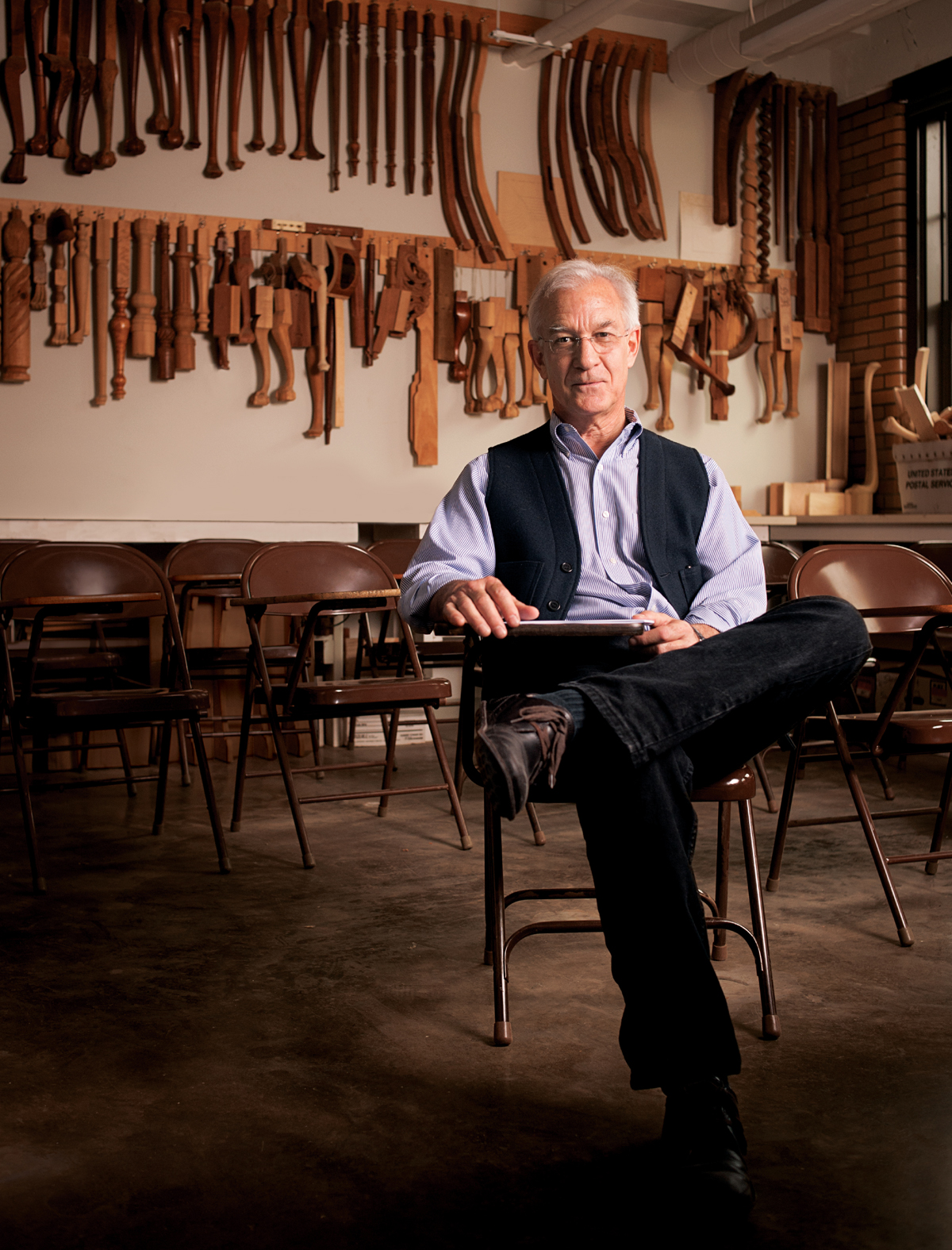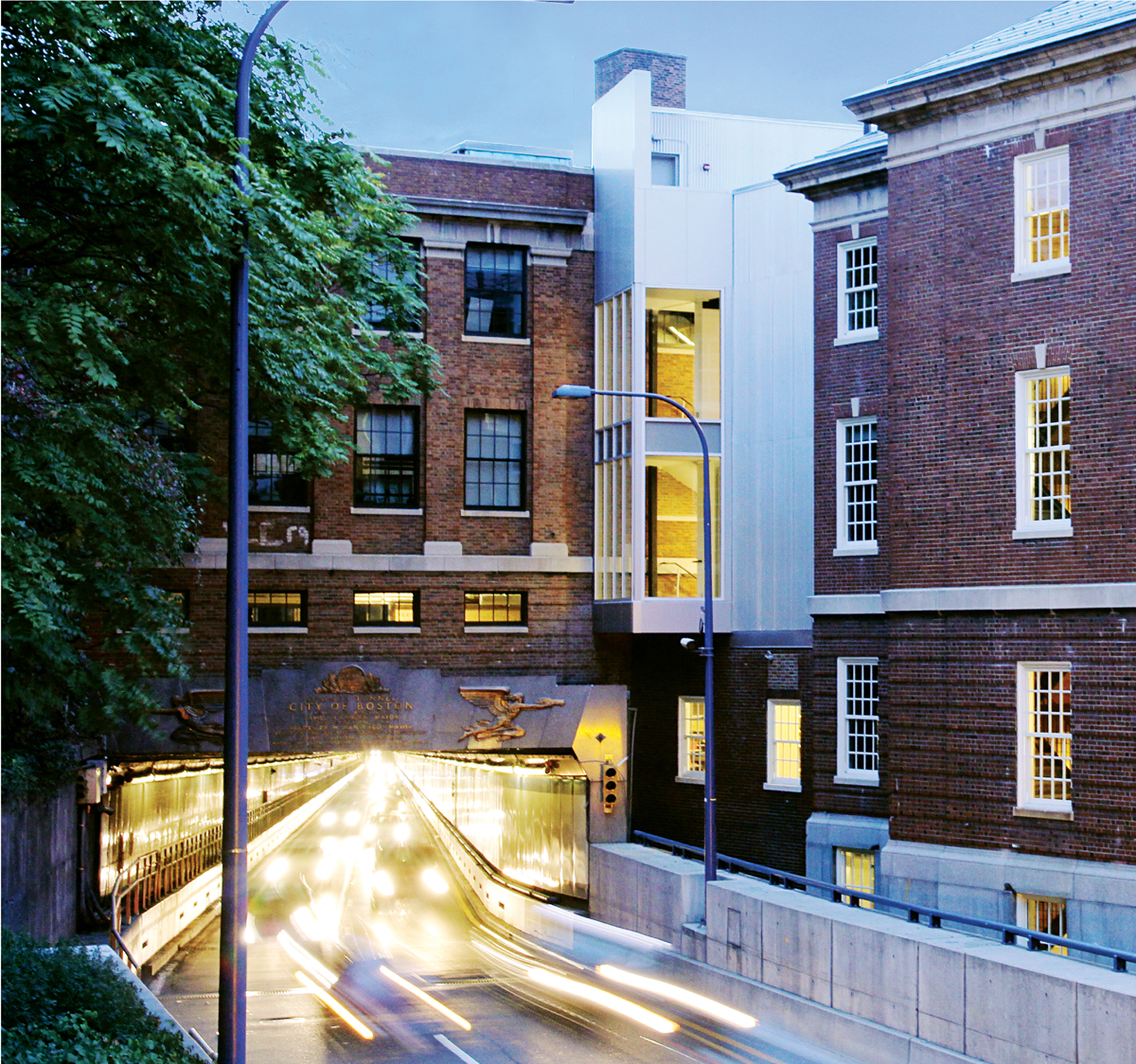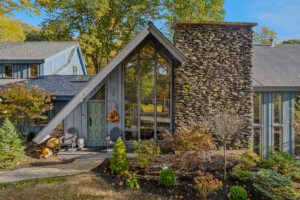Building Blocks

Photograph by Jared Leeds
One of Boston’s best-kept secrets is tucked away on a nondescript corner in the North End. Founded more than a century ago, the North Bennet Street School is one of the nation’s oldest schools dedicated to teaching fine woodworking and other classic handicrafts. Over the years, thousands of graduates have mastered the art of bookbinding, cabinet making, preservation carpentry, and even violinmaking inside a modest 19th-century building. But in September, the North Bennet Street School moved from its original home to a brand-new complex just around the corner. A former police station and printing plant stitched together by an ultra-modern addition, the space has given NBSS room to grow. Leading the transition as the school’s sixth president is esteemed architect-turned-furniture-maker Miguel Gómez-Ibáñez. Here, the arts and education enthusiast talks transformation and what’s in store for the institution.
What can you say about the North Bennet Street School as a catalyst for transformation?
I had a wonderful career as an architect, and I wouldn’t trade it for anything. But the higher I got in the pecking order, the more time I spent on the phone and writing letters. By the time I owned my own firm, that’s all I was doing. I needed a rest, and I turned to NBSS to take time out. As a furniture maker, I’d walk to work with a list of things I wanted to accomplish and I’d end the day by completing the list. Leaving work each day having done something concrete was truly transformational. I never once looked at my watch. I have a contract to stay here a limited time and after it’s done, I’ll go back to being a furniture maker. And I look forward to that.
What’s the most important thing you learned at the school?
As an architect I was very competitive with my peers, but I discovered it doesn’t have to be that way. The world of craft and working with your hands is bigger than any one person’s occupation or involvement, which makes furniture makers and craftspeople exceedingly generous and noncompetitive. Here at the school, there’s this impulse to help and support the students around you, because their success is as meaningful as your own. So I guess I’ve learned about the incredible openness of the artisan world.
Were you the typical NBSS student?
Typical in that I was going for a second career, yes. The bulk of our students are around 30 years old and have either left careers that they’ve found unfulfilling, or have simply decided they wanted to work with their hands. We also have people straight out of high school who have always known they wanted to make things. A few of our students are in their sixties—early retirees embarking on a second or third career. In general, we’re training people to make a living in a way that’s meaningful for them that they didn’t find in their previous lives.
How do you reach out to prospective students?
Nationally, our instructors have a very strong presence in each of their crafts: The piano technicians present across the country, furniture-making instructors are contributing authors to leading trade magazines. And through the Internet, we’ve attracted international students as well. Right now, we are also trying to connect to the local scene through public lectures. A few years ago, we started a middle school woodworking program with the John Elliot School, and now we’re serving middle school students in Charlestown and another private school, St. John, in the North End. Essentially, we’re reintroducing shop class, which was largely cut out of schools in the ’90s.
Right—practical subjects like shop and home economics have vanished from the standard curriculum. What is the value of these classes for kids?
When we give eighth graders a tour of the violin or jewelry shop, we hear, “Wow, I didn’t think you could make stuff like that!” I honestly don’t know where they think things come from, out of a box I guess. But when they see that someone actually makes those things, and they take a class in which they can draw something and then make it, that’s game-changing. In fact, many people’s gifts don’t involve reading, but rather working with their hands. And if they don’t get that experience when they’re young, they won’t have it in mind as a career path.
Tell me a bit about the new building.
We’ve been in the same space—originally built as a church—since 1881, and through the years we’ve tried to adapt it to meet our needs. But as we’ve expanded, especially over the past couple of decades, we’ve had to rent space elsewhere—the carpentry program moved to a 10,000-square-foot facility in Arlington, and we moved our locksmithing program to South Boston. With this new building, we have all eight departments and the continuing-education department in one place. The bookmakers can talk to the jewelry makers and the violinmakers can talk to the piano technicians.
What was it like to be on the other side of a major architectural project, this time as the client?
Because I was spending the money, the stakes were high, but I could sympathize with the architect. In spite of our small budget, we wanted the building to have an architectural focus. With my background, I could sense when a design decision was really important to Buck Sleeper, the project architect at Kennedy & Violich Architecture, and then I’d try to protect that, searching instead for other areas where we could save money.
What are your plans for the new spot?
We finally have space for a community—meeting rooms, an atrium with a balcony, seminar rooms, and a place big enough to gather 200 people. We haven’t been able to involve the public in anything we do because of lack of space, but now we can invite people to take part in our programs. We had 100 in attendance for our first public lecture—a bookbinder from Belgium. And it gave us a sense of how great it can be to have visiting lectures here and invite the public in.
Was fundraising difficult?
Because we’d never done a capital campaign, we had no idea what kind of support was in our midst. Then, as soon as we had a project, everyone rallied around it, from surprising places. In the middle of one of the worst economic downturns we’ve seen, we raised $17 million in less than two years.
And what does that tell you about Boston?
It tells me that there is a lot of love and support for what we do in this city. The mayor, the philanthropists, and the smaller donors all understood that we’re not preserving old craft out of nostalgia; we’re training people in traditional crafts to make a living at it. We’re a professional school, not adult daycare. Our accreditation depends on our placement, and our placement is more than 85 percent. The important thing for me is that clearly our supporters affirmed that we are relevant.
When your tenure at NBSS ends, what’s your dream project?
One of my goals in life is to live in a house where I know who made everything—the tableware, furniture, glasses, everything. I’d build it for myself and have it be the last home I live in.
Where would this dream house be?
That’s the problem. When you get to be my age, you wonder where your grandkids are going to be and things like that. It could be on the water or in the mountains. It’s not site-dependent.

North Bennet Street School holds public lectures and other special events in the sunny new atrium. (Photograph by KVA Architects)

A view from the back of North Bennet Street School’s new building. (Photograph by KVA Architects)


